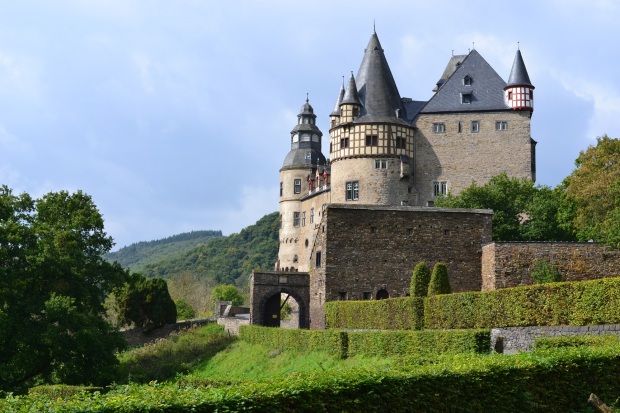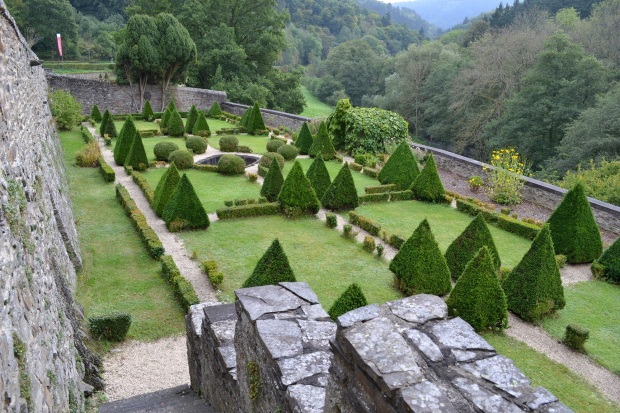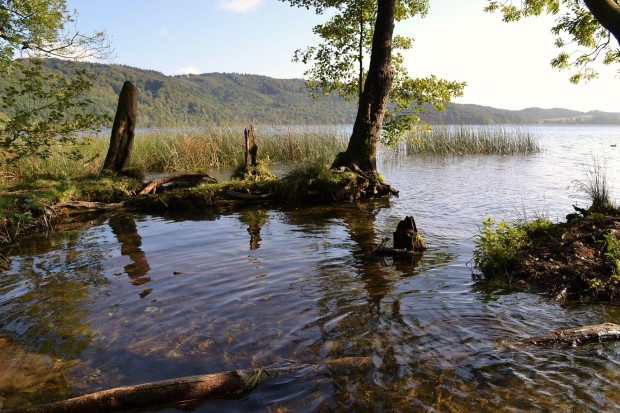Archive for February, 2017
Eifel National Forest roadtrip – Part 3
Posted by lukegeoffreyjohnson in holidays, photos, water on February 22, 2017
Hello everyone…
Well, here we are, another post and it is nearly the month of March! Crazy stuff. Life is busy as ever and with the impending onset of the (admittedly, self-inflicted) training regime for the Tour of Pembrokeshire, it is set to get busier, I dare say. Apparently, it’s a 12 week improvement plan, or something. I shall let you know how it is going.
Anyway, for one thing, I hope the weather picks up some time soon. A little while ago, I may have mentioned the onset of the back end of Storm Doris (thanks to the US for sending that across) but it seems that was a false alarm and this is now the time for Doris to hit. According to one of my my little weather gadgets, it is set to rain…..

For ease of reference, this little bulb, known in the lingo as a “Goethe Globe” is a weather predictor in that, once filled with liquid, a pocket of sealed air with a constant pressure is created inside the device. As the atmospheric pressure changes outside the glass, it will affect this sealed air. A high atmospheric pressure system will push the liquid down the spout, as the outside air is heavier than the trapped air inside. Low pressure will cause the trapped air to be heavier than the outside air and will push the water up the spout. High atmospheric pressure or a “low reading” in the spout usually indicates fair weather, while a “high reading” in the spout usually forecasts poor weather or a low pressure system. In this instance, it seems that it should have been raining buckets indoors!
However, I digress. I seem to recall that I promised you all a castle, or in German “ein schloss”, so here we are. On the day in question, following the roads and my few euros worth of map, I happened upon Burresheim Castle. In so doing, I chose a unique place, as this castle, together with Eltz and Lissingen, is one of the few sites in the Eifel that have never been conquered or destroyed and have been able to withstand the wars of the 17th and 18th centuries, as well as numerous European upheavals since.

That being the case is all well and good, I was just struck by the fact it was a pretty good looking building all in all. From the moment you entered the grounds, you could tell this was a mature and well established property (click the link for an old painting of the castle) and was especially taken by the lovely gardens to the side. The effort that goes into the maintenance of the pyramid bushes is pretty awesome in itself.

Moving further in, a glance at the floor lets you know that this place has been around for a few years. In fact, the castle was built in the 12th century and Bürresheim was mentioned in documents for the first time in 1157 along with the owners at the time. You can see the age of the property by the visible ruts in the stone entrance way worn down by umpteen horses and carts transporting their wares ….

How is this for an olde worlde kitchen too eh? OK, so I know that all of the equipment here is most likely not original, but I am sure there is an attempt to make the fixtures and fittings as close to authentic as possible. Imagine rustling up dinner using the rickety cupboard and stone fireplace…..by candlelight. Respect to the cooks!

Talking of trying to be authentic, it is worth mentioning that what you see in the photos is not what you saw if you clicked on the link above to the original painting of the castle. The complex, which currently appears as a closed unit, has only been like this since the 15th century. Previously, they were two completely independent, non-connected and differently sized buildings. Once upon a time, the fortress of Bürresheim was secured by a few walls and drawbridges. The latter are nowadays buried and only a few remains are left of the walls. On other matters though, get a load of this door….that there is a piece if fine architecture. Beats IKEA hands down…..

It seems that this castle was so good, it even had a brief flutter with the movies. That’s right, Burresheim is famous, albeit under different names. A brief exterior shot of the castle can be seen in Indiana Jones and The Last Crusade where it features as the fictitious Brunwald Castle on the German-Austrian border, where Professor Henry Jones Sr is held. Additionally, it has featured in German domestic films for children as a kings castle, an advert showed the baroque garden as well as the castle in the background and in May 2009 filming took place for a German language version of Rumpelstiltskin. So, in honour of a static building being more famous than I, a further picture of the lovely exterior inclusive of gardens is due!

Onward now to a couple of water based images. On the way back from here, I stopped at what I thought was a pleasant lake for a leg stretch/walk. Judging by the large car park and numerous cafes, I thought it would be nice but it turned out to be very interesting too. What I had actually found was the Laacher See, an oval volcanic caldera lake around 1.5 miles in diameter up in the hills. It is part of the larger Eifel volcanic range and caldera features in the area, after an eruption formed the lake around 13,000 years ago. Since then it slowly filled with water but was expanded a bit in Roman times as the lava was quarried for millstones until the introduction of iron rollers for grinding corn. On the western side lies the Benedictine monastery of Maria Laach. The lake has no natural outlet, but is drained by a tunnel dug before 1200 and rebuilt several times since. As you can see, the nature of the rock makes the water as clear as a bell, which probably accounts for the popularity with tourists.

Having a Google, there are guesses of what this eruption might have appeared like at the time. SCIENCE ALERT! Much text about volcanoes now; please scroll down if you are likely to be bored easily or frightened by scales of the eruption in numbers! It is very interesting though, so please, hang on in there…..
So, for what seems a fairly small hole in the ground, the effects that it would have had were pretty far reaching and quite humbling. According to the scientific guff and in summary, volcanism in Germany can be traced back for millions of years, due to the collision between the African and Eurasian plates, but it has been concentrated in bursts associated with glacial advances and retreats. The initial blasts forming the Laacher See, which took place in late spring or early summer, flattened trees up to 3 miles away. The magma opened a route to the surface which erupted for about ten hours, with the plume probably reaching a height of 20 miles. Activity continued for weeks or maybe even months, with pyroclastic flows travelling 6 or 7 miles away covering the area with hot sticky mud. According the surveys, near the crater deposits are over 150 feet thick and even many miles distant, they are still 30 feet thick. In this eruption, all plants and animals for a distance of about 40 miles would most likely have been exterminated.
Unbelievably, the sticky mud actually seems to have dammed the Rhine River and created a lake! When this burst, the water flooded downstream and traces of this mud have found in Bonn, 50 miles away. Fallout effects have been recorded in an area of more than 120,000 square miles, covering from central France to northern Italy and from southern Sweden to Poland.
The wider effects of the eruption on weather were pretty harsh too, amounting to several years of cold summers and up to two decades of environmental disruption in Germany. However, the lives of the local population, known as the Federmesser, were massively disrupted. Before the eruption, they were a sparsely distributed people who existed by foraging and hunting, using both spears and bows and arrows. According to archaeologist Felix Riede, after the eruption the area most affected by the fallout (the area nearby occupied by the Federmesser) appears to have been largely depopulated and population shifted to southwest Germany and France. However, he states that these people seem had a lower level of toolmaking skills than the Federmesser and appear to have lost the bow and arrow technology. In Riede’s view the decline was a direct result from the disruption caused by the Laacher See volcano eruption. In essence, the eruption set the evolution of northern Europe back a little, which is pretty blooming scary when you consider the existing volcanoes and the population nearby in parts of Europe such as Naples.
Anyway, not that anything is likely to happen in our lifetimes, let us bask in the prettiness of the clear water and try and forget the geological time-bombs around the world!

That was a little bit of a sobering note to end up on wasn’t it? Sorry about that. You have to admit that it is fascinating though isn’t it? The fact that surveys can find things like this out and a picture can be built up of what might have happened, is very interesting to me and I hope that it was for you too. Don’t worry, I don’t go all science all the time, there was a few easily accessible articles that had clear illustrations in, so I couldn’t help myself. Calm your fevered brows with a nice green landscape….

You’re welcome. Next time, I shall avoid science, honest. Thanks for reading as ever, see you soon with a more light hearted blog, promise!
